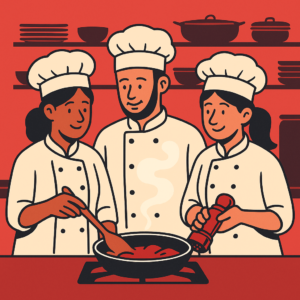(5 minute read)
When in charge of a restaurant operation there are obvious elements that are on the task list, like ensuring a wonderful customer and staff experience, establishing the quality of every element of the interaction, finding ways to get the customers on seats, analyze data and numbers to take courses of action, engage and influence the team and coordinate the logistics, to name a few. How to go about all that?.
Management is an activity where three areas are to be a permanent work in progress: people, technical aspects and time. First one being people, of course, as business is people; the defining culture around the human element of the interactions. Second, comes the technical side which requires specialization and experience; it’s requirements being associated with the sophistication of the product we deliver. And last, but certainly not least, is time, the critical element in every decision: time passing, timing, periods of time, processes and systems.
Time is the crucial element of every bit that involves the restaurant operation (well, life in general, but for this piece lets focus on the restaurant world). Opening and closing times, business hours, shift length, duration of prep and execution of the items on the menu, seasonality of ingredients, extent of contact with customers, calendar and agenda of our customers that determine busy and quiet periods, operating licenses’ brackets. Every point of contact with the restaurant is determined by time.
Setting goals attached to specific times is one way to manage a restaurant operation successfully. Considering that the restaurant, as a concept, due to all its human aspects, is a very unpredictable place, which makes it so much fun!. And, contrary to what some say, time can be your ally. The fact that it is not subjective provides a safe haven for reaching targets. The set times for certain things to take place and to have been completed is an effective way of creating a foundation that provides sustenance to the holy grail of consistency.
There are five times in a restaurant operation that if kept religiously, can be an extraordinary tool. Shift Team meeting; Lunchtime; Pre-Service Briefing; Opening time; Closing time; they are sacred, non negotiable, and it should be a daily minimum to be Swiss-level-punctual on each of them. By following these, and the steps that must take place in order for them to be achieved, you can ensure that in terms of logistics and attention to detail, the stage is set to provide an amazing experience consistently.
The first one, the Shift Team meeting, takes place 10 minutes after the entry time. The people that will be in the shift that day takes a moment to reflect on the previous service, how did each felt about their performance and overall mood. The things they succeeded at and those that perhaps didn’t go so well or as planned. Listening to each other allows us to connect, to learn, to un31ewAderstand and to work as a team. It is a time to make observations and provide solutions if needed, going over the relevant positives and less ideal situations that may have taken place during the last service. The task distribution is reviewed and any special note or requirement is also distributed.
The staff meal is one of those powerful moments that serves as a fantastic management tool. It is a fact that it is a real mirror of your culture. What you serve, where and how, the attention and relevance given to it is a direct result of what the company believes that matters. It also serves as an operational tool for organizing tasks. If the staff cannot prepare the restaurant for service, and also sit for at least 30 minutes, to have a meal without hurry, in a convivial and enjoyable manner, it is certain that the ratio of tasks and manpower are off balance. This will either end up in burn out or in a persistent absence of attention to detail or completion of certain (or many) tasks.
Pre-service meeting is the equivalent of any coach meeting prior to any game of any sports. The strategy is reminded and the tactics are reviewed. Missing this moment of alignment is an almost certainty of failure and struggle. Ensuring everyone is ready for what is coming and meant to be faced together in synchrony, like in sports or entertainment, gives way to flow and magic. Everyone is on the same page and the story then is a happy one.
Opening and Closing times are the only public promise you can make about your establishment. The one thing you can guarantee your customers about yourself, like what time you start and stop to offer your service, is the one thing you can say without doubt, anywhere and everywhere. The rest, it’s subjective and is all an opinion, and you cannot claim it to be absolute. The times of your operation can always be true, they can be the one thing you can promise in advance and for this reason, they should be guarded with much seriousness.
Let’s define the Opening time as the one where everything is in place, when the experience is au-point to be delivered as it was conceived. One thing is to be rearranging flowers or doing some finishing touches, but another is to still have to set tables or the kitchen be unprepared for the first ticket to bang. Again, if the restaurant is not able to open punctually, fully prepared and ready to rock, there is a problem to fix on the amount of hands or the amount of tasks or their time arrangement.
Finally, let’s establish that Closing time is one to remain constant and be vigilant about. Towards the end of the shift it is natural to lose some of the energy that we started with, it is very important to ensure that all guests, regardless of their time of arrival, have the same vibrant experience than those who arrive early in the day. Once the last call is given, the preparation and steps of ensuring the smooth operation of the following day should begin. The quality and dedication given to the sequence of closing chores, sets the tone for the opening. And of course, this tone will affect all the sacred times to be achieved the following day. Setting a full circle and giving each one of these moments an equal amount of importance and correlation.
Perhaps most restaurant managers have indicators and common goals that are attached to the job title and position. There is not one road to follow to achieve what we set ourselves to do, however, the beauty of the journey is to come up with your own ways to reach targets and objectives. There is a side of working in restaurants that is exhilarating and fabulous, particularly in management where there is a responsibility over the quality of the human experience of both guests and staff. For that same reason, it also comes with times that are less so.
Without the judgment of what a good or bad day in a restaurant may be, one thing is for sure, it is unpredictable, just as humans are. But if systems and procedures are in place to ensure these five times are met at the highest standards possible, there will be some level of predictability and stability. If the fundamentals are covered, energy can be saved for the thrill of never knowing who will walk through that door and how the day will turn out.





